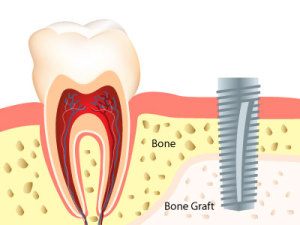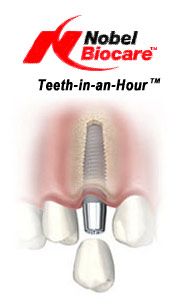- NYC UES Office
- 970 Park Avenue, Suite GFN,
New York, NY 10028
- Carnegie hill Office
- 1175 park avenue,
new york, ny 10128
Tag: dental implants
It’s normal to feel anxious before oral surgery, but proper preparation and knowing what to expect will help ensure that everything goes smoothly. One aspect of preparing for oral surgery is discussing your anesthesia options with your physician. Here’s an overview from NYC oral surgeon, Ruben Cohen, DDS, about anesthesia for oral surgery.
 What does anesthesia do?
What does anesthesia do?
The term anesthesia comes from the Greek for “loss of sensation”, but that’s not the only effect it can cause in your body. Depending on the type(s) and amount used, anesthesia can relieve pain, induce amnesia, reduce anxiety and temporarily paralyze your muscles so that a physician can perform pain-free surgical procedures.
What types of oral surgeries use anesthesia?
Anesthesia may be used for many types of oral and maxillofacial surgeries. At our accredited Upper East Side practice, procedures commonly performed with anesthesia include:
- Wisdom teeth removal
- Dental implants
- Surgical exposure of impacted canines and other teeth
Park Avenue Oral & Facial Surgery is one of just a handful of New York City practices that also specializes in pediatric oral surgery. Our medical staff is trained in treating infants and young children with special needs and complex health issues. Get more tips to prepare for a child’s oral surgery by reading our blog post, Calming Fears About Your Child’s Oral Surgery.
What types of anesthesia are used for oral surgery?
There are several anesthetic options for oral surgery. Depending on a patient’s needs and the procedure he or she is undergoing, more than one kind of anesthesia may be used.
- Local anesthesia – With local anesthesia, the patient remains totally awake and will be fully aware of everything during the procedure. An anesthetic (e.g., lidocaine) is administered in the area where the surgery will be performed. Local anesthesia is commonly administered in conjunction with another type of anesthesia to eliminate pain during a procedure and minimize post-operative discomfort as well.
- Nitrous oxide (laughing gas) – Nitrous oxide is a colorless gas with a sweet odor and taste, which produces insensitivity to pain when inhaled. It is administered with a comfortable mask placed over the nose through which the patient breathes to achieve the sedative, relaxing effects.
- Intravenous anesthesia – Intravenous anesthesia, also referred to as “twilight sedation”, is a form of anesthesia wherein the patient is not fully unconscious, but he or she is drifting in and out of sleep in a comfortable, calm and relaxed state. This type of anesthesia can be administered by Dr. Cohen in one of the operating rooms at our accredited practice. Twilight sedation may also be used for patients who suffer from dental anxiety or dental phobia when they are undergoing minor procedures.
- General anesthesia – With general anesthesia, sedation medications are administered through an intravenous line and closely monitored by Dr. Cohen. The patient is completely asleep during the procedure and will not remember anything about it.
What training do oral surgeons receive in order to administer anesthesia?
Oral and maxillofacial surgeons are trained in all aspects of anesthesia administration. Following dental school, they complete at least four years of training in a hospital-based surgical residency program alongside medical residents. During this time, they serve on the medical anesthesiology service, where they evaluate patients for anesthesia, deliver the anesthetics and monitor patients during and after surgery. As a result of this extensive training, oral surgeons are well prepared to appropriately administer all forms of sedation and general anesthesia in an outpatient setting.
What is office-based anesthesia?
Office-based anesthesia refers to the administration of anesthesia from the comfort and convenience of the oral surgeon’s medical practice. At Park Avenue Oral & Facial Surgery, we are pleased to offer the majority of oral surgery procedures from our office. The advantage of office-based anesthesia is that it minimizes patients’ waiting and recovery time, as compared to having the same procedure performed in a hospital or outpatient surgery center. In addition, in-office procedures and anesthesia delivery are usually less expensive than similar care in a hospital or outpatient surgery center.
Visit our sedation dentistry page to learn more about this topic. If you have any questions about oral surgery and anesthesia, please get in touch with our office by calling (212) 988-6725. We are here to ease your concerns about oral surgery and ensure that you are well informed about your anesthesia options long before your procedure.
The human body’s ability to regenerate bone is just one of its remarkable capabilities. A bone graft is a procedure that facilitates this process. It involves transplanting bone in an area where loss or degeneration has occurred so that the body can regrow bone. While it may seem like an invasive process, the truth is  that bone grafting has actually become quite a routine procedure – and it’s less invasive than you’d think!
that bone grafting has actually become quite a routine procedure – and it’s less invasive than you’d think!
NYC oral surgeon, Ruben Cohen, DDS, founder of Park Avenue Oral & Facial Surgery, explains what oral bone graft surgery is and describes the different types of bone graft procedures. He also addresses how bone grafting facilitates dental implants for patients who may lack the necessary bone needed for successful implantation.
What is dental bone grafting and what is it used for?
Dental bone grafting is a procedure that stimulates the formation and regrowth of bone along the jaw in cases where significant loss or degeneration has occurred. The procedure involves carefully placing grafted bone in the affected area and covering it with a barrier so it can heal properly. Bone grafting is commonly associated with dental implants as it is used to rebuild the jawbone to a suitable height and width for placing artificial roots. The most common reasons bone grafting may be needed include jawbone deterioration from lost teeth/tooth extractions and periodontal disease. To learn more about other common causes, visit our bone grafting procedure page.
What are the types of oral bone graft procedures?
There are several types of bone graft procedures and your oral surgeon will recommend the surgery that is best for your unique circumstance. The different types include:
- Sinus Lift Procedure – A procedure that is done when a patient does not have enough bone in the upper jaw and/or the sinuses are too close to the jaw. It involves elevating the sinus membrane in the back area of the upper jaw and placing the bone graft on the sinus floor.
- Ridge Augmentation – Ridge augmentation involves rebuilding the bone height in the area where dental implants will be placed. The width or thickness of the ridge may also be increased, if necessary. A ridge augmentation is accomplished by placing bone graft material on the existing bone where more bone is needed to place dental implants.
- Socket Bone Preservation – In socket bone grafting, a bone graft is placed at the site of a tooth extraction in order to maintain the bone level necessary for future implant placement. While not always necessary, socket bone grafting allows for more predictable bone formation in anticipation of dental implant procedures.
All types of bone graft procedures can be completed from the comfort of our state-of-the-art Upper East Side office, an accredited surgery center. We offer several dental implant options to our patients, which can conveniently be completed from the same office once proper healing has occurred. These procedures are often done under IV sedation, so that you can be comfortable during the procedure.
Where can I get bone grafting for dental implants in NYC?
If you are looking for an oral surgeon in NYC to perform a bone graft procedure, contact Park Avenue Oral & Facial Surgery today by calling (212) 988-6725. You can also schedule a consultation by filling out the appointment form on this page. We look forward to meeting you and answering all of your questions about this bone-regenerating procedure.
 Getting dental implants used to mean numerous trips to the oral surgeon and a time frame of several weeks or months to complete, from start to finish. The last thing a patient wants to endure when dealing with missing teeth or painful irritation from ill-fitting dentures is a long wait time. At Park Avenue Oral & Facial Surgery, we are pleased to offer a much better solution for our patients called Teeth-in-an-Hour™, a procedure that slashes the wait time to a fraction of what it once was. With this state-of-the-art technology, patients can have permanent dental restorations completed within a day. What’s more, the surgery allows for a faster recovery with less swelling, bruising and post-operative pain than traditional dental implant surgery. The entire procedure can be completed from the comfort and convenience of our Upper East Side office.
Getting dental implants used to mean numerous trips to the oral surgeon and a time frame of several weeks or months to complete, from start to finish. The last thing a patient wants to endure when dealing with missing teeth or painful irritation from ill-fitting dentures is a long wait time. At Park Avenue Oral & Facial Surgery, we are pleased to offer a much better solution for our patients called Teeth-in-an-Hour™, a procedure that slashes the wait time to a fraction of what it once was. With this state-of-the-art technology, patients can have permanent dental restorations completed within a day. What’s more, the surgery allows for a faster recovery with less swelling, bruising and post-operative pain than traditional dental implant surgery. The entire procedure can be completed from the comfort and convenience of our Upper East Side office.
How does Teeth-in-an-Hour™ work?
The process begins with taking an I-CAT scan of the patient’s jaw that enables Dr. Ruben Cohen to generate a three-dimensional model of the jawbone. The model, created in a high-tech virtual reality software, allows for an implant to be planned and fabricated without the patient present. Because of the precision and accuracy afforded by this software, it ensures that a perfect-fitting implant will be created that can be placed in one convenient surgery. No fittings or modifications need to be made in between the initial modeling phase/fabrication of the implant and the patient’s surgery day.
On the day of surgery, the patient will undergo general anesthesia so Dr. Cohen can carefully insert the implants and position the newly fabricated teeth in place on top of them. The entire process only takes a few hours to complete and the patient will awake with restored teeth that look, feel and work like their own.
What are the benefits of Teeth-in-an-Hour™?
The benefits of Teeth-in-an-Hour™ are numerous and include:
- Just one surgery completed with less chair time (60 minutes or less)
- Less post-operative discomfort than traditional dental implant surgery
- Faster recovery time
- Minimal swelling
- Minimal bruising
- A return to normal activities the next day
If you are interested in learning more about Dr. Cohen’s Teeth-in-an-Hour™ offering, please contact our office or call (212) 988-6725 to schedule an appointment with us today. We look forward to restoring your smile with flawless results in faster time.